March is typically a make-or-break month for many folks as it relates to reaching their health and wellness goals for the new year. The resolutions are losing steam, weather tends to sway fitness decision-making, and focus begins to shift a bit away from what brought them to the gym in the first place. My message to many at this time of year is to continue to WIN EACH DAY! By that I mean have more checks in the win column than in the loss column. It’s natural to slump a little—we haven’t seen the sun in a month, for crying out loud. But continue to focus on doing those things that constitute WINS and limit those things that would be considered a LOSS.
NIFS Instructors Share Their Observations in the Gym
This is also a great time of year to hit a few reminders of what you should and should not do in the gym I asked the experts (the highly trained NIFS instructors): What are some things you see gym-goers do that needs immediate attention and correction? Along with a few of my own, here is what the team had to report on the common things we see in the gym that you should and should not do.
Tony: Control the Weights
- Not controlling the weight of an exercise throughout the entire ROM.
- Dropping the weight unsafely.
- Holding on and hunching over a climb mill.
- Standing the wrong direction in a squat rack.
Lauren: Deadlift
- Tuck the chin in neutral spine
- Use clips for safety
Thomas: Bicep Curl
- The emphasis on bicep curl contraction is more pronounced when we isolate the muscle. this can be done by avoiding movement and momentum from arm swinging by pressing the elbows toward your sides
- Sometimes, more weight does not make the exercise better, but better movement patterns can make the exercise more effective and safer
- An easy way to also accomplish this would be to press your back against the wall and perform the exercise
Ashley: Proper Plank
- Hips in the air/not a flat back
- Proper way is flat back, hips level, core tight
Tinisi: Proper Lunge
- Keep your upper body straight, with your shoulders back and relaxed and look straight ahead
- lower your hips until both knees are bent at about a 90-degree angle
- Core tight
Keep Striving for Wins and Contributing to Your Fitness Community
We covered a great deal of information here—pretty important stuff for both proper technique and fitness community etiquette. As I covered in my post Culture Club: How to Be a Strong Member of a Fitness Community, we are all in this together! And a community of support and positive energy is a place we can all thrive in, and must all contribute to. I know that some of the new year perspective may have lost a little sparkle, but you are still on the right track. Just remember, have more WINS than LOSSES and you will continue to improve!
This blog was written by Tony Maloney, ACSM Certified Exercise Physiologist and Fitness Center Manager. To find out more about the NIFS bloggers, click here.

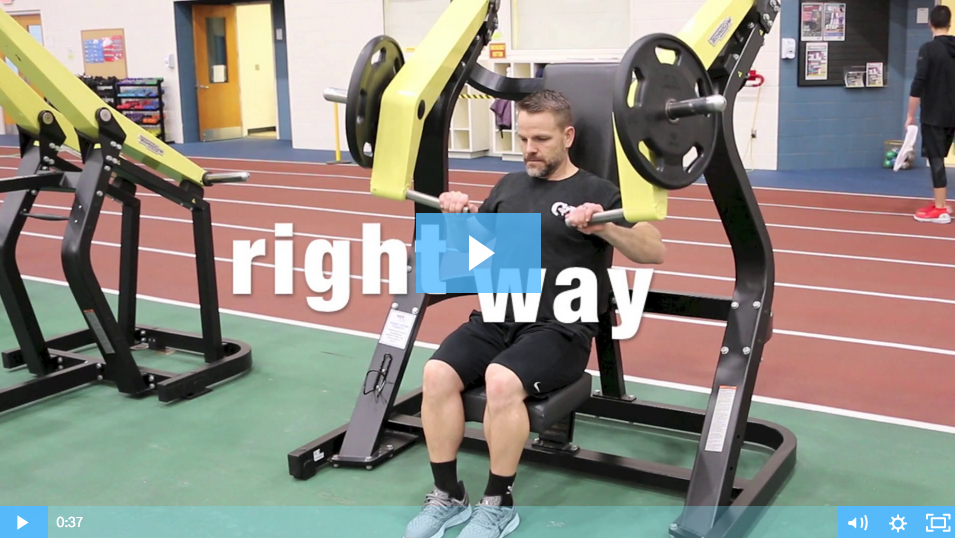

 Les Mills® BODYPUMP™
Les Mills® BODYPUMP™
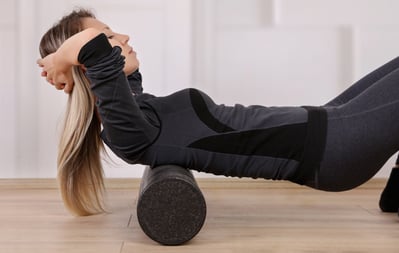 A common nuisance to almost all fitness enthusiasts is the overall lethargic feeling you get from being extremely sore due to a challenging workout. Sometimes this is a deterrent to those looking to develop a consistent workout pattern, and can be especially bothersome if you haven't experienced this phenomenon before.
A common nuisance to almost all fitness enthusiasts is the overall lethargic feeling you get from being extremely sore due to a challenging workout. Sometimes this is a deterrent to those looking to develop a consistent workout pattern, and can be especially bothersome if you haven't experienced this phenomenon before. It should come as no surprise to anyone that High Intensity Interval Training (HIIT) and Metabolic Conditioning workouts are crazy-popular and are here to stay for the foreseeable future.
It should come as no surprise to anyone that High Intensity Interval Training (HIIT) and Metabolic Conditioning workouts are crazy-popular and are here to stay for the foreseeable future.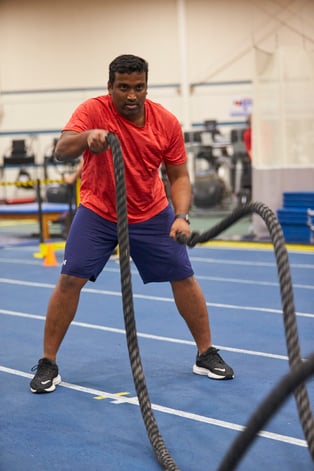 When you begin your fitness quest and are getting started on a new program, finding exercises that are appropriate for you is key to your success. Your fitness staff at NIFS has your back! Training methods and training tools developed from years of research and practice have shown that sometimes a simple exercise done well can be quite effective.
When you begin your fitness quest and are getting started on a new program, finding exercises that are appropriate for you is key to your success. Your fitness staff at NIFS has your back! Training methods and training tools developed from years of research and practice have shown that sometimes a simple exercise done well can be quite effective.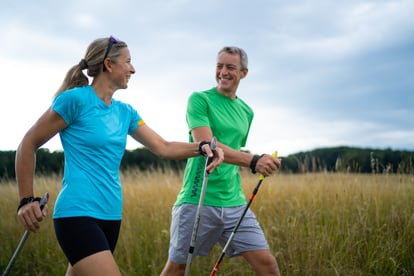 Unless you have been on Mars for the last four or five decades, you have heard, read, and seen the benefits of walking for health and fitness. There is no new hot take on walking; it’s always been a fantastic way to stay healthy and enjoy exercise.
Unless you have been on Mars for the last four or five decades, you have heard, read, and seen the benefits of walking for health and fitness. There is no new hot take on walking; it’s always been a fantastic way to stay healthy and enjoy exercise.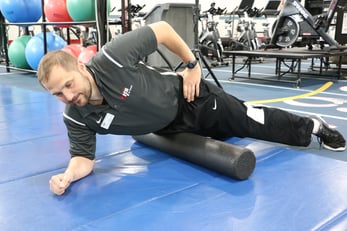 Most workout formulas include a warmup process. If hip mobility is a focus, your workout would benefit from a few additions to the routine. Foam rolling, which has been around for a while, is a great way to get blood circulating to the muscles and decrease soreness (if you worked them out prior). Spending a few minutes to roll out the trigger spots (areas of higher tenderness) will help you feel better, and you will be able to exercise on a more consistent basis.
Most workout formulas include a warmup process. If hip mobility is a focus, your workout would benefit from a few additions to the routine. Foam rolling, which has been around for a while, is a great way to get blood circulating to the muscles and decrease soreness (if you worked them out prior). Spending a few minutes to roll out the trigger spots (areas of higher tenderness) will help you feel better, and you will be able to exercise on a more consistent basis.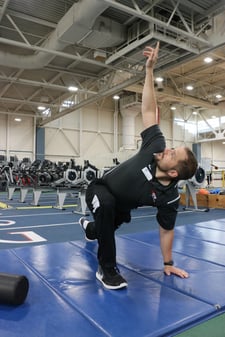 Second, I would suggest a dynamic movement stretch (rather than traditional static stretching) to help not only stretch the muscle, but also warm up the body for more movement. “The
Second, I would suggest a dynamic movement stretch (rather than traditional static stretching) to help not only stretch the muscle, but also warm up the body for more movement. “The 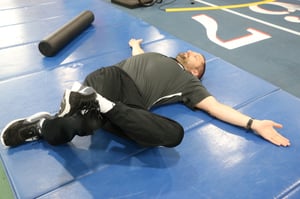 Finally, another great stretch to do is simply called a
Finally, another great stretch to do is simply called a 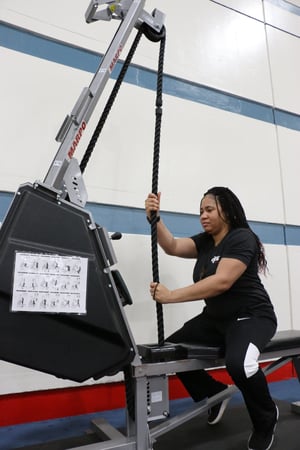 Ergometers have been a mainstay in the fitness world for a long time. You might not realize it, but many of the cardio pieces in your fitness center that you use regularly are ergometers. The arm ergometer comes from two Greek words: ergo, which means work, and metro or meter, which means measurement. In essence, any cardio equipment you have been using that has the capability to measure your workload can be considered an ergometer.
Ergometers have been a mainstay in the fitness world for a long time. You might not realize it, but many of the cardio pieces in your fitness center that you use regularly are ergometers. The arm ergometer comes from two Greek words: ergo, which means work, and metro or meter, which means measurement. In essence, any cardio equipment you have been using that has the capability to measure your workload can be considered an ergometer.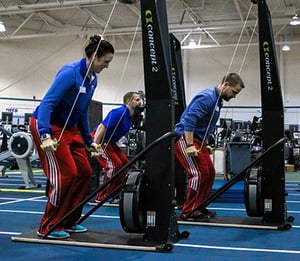 Another piece of UBE equipment you can find is the
Another piece of UBE equipment you can find is the 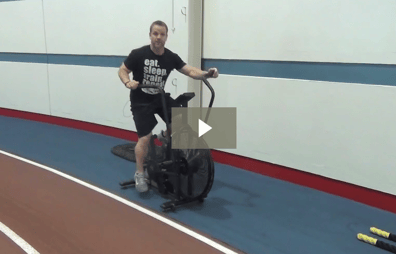
 The Rules of Being in the Flow
The Rules of Being in the Flow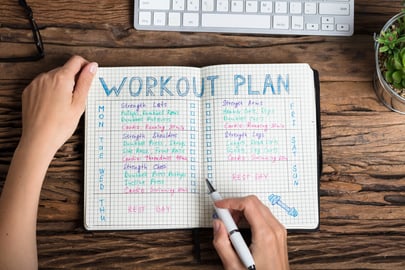 1. Have a plan, and don’t cheat.
1. Have a plan, and don’t cheat.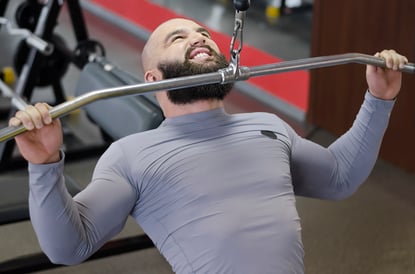 Have you ever tried working out in a time crunch or just wanted to get more exercise in a shorter period of time? Maybe you would like to speed through, but would rather have a plan of action to make your path a little easier. You are in luck because there is a fitness concept that does all of this while making sure you get a great workout. The idea is called supersetting, but it’s not as simple as you might think. To develop a great superset workout, you need to understand how a few concepts really work.
Have you ever tried working out in a time crunch or just wanted to get more exercise in a shorter period of time? Maybe you would like to speed through, but would rather have a plan of action to make your path a little easier. You are in luck because there is a fitness concept that does all of this while making sure you get a great workout. The idea is called supersetting, but it’s not as simple as you might think. To develop a great superset workout, you need to understand how a few concepts really work.